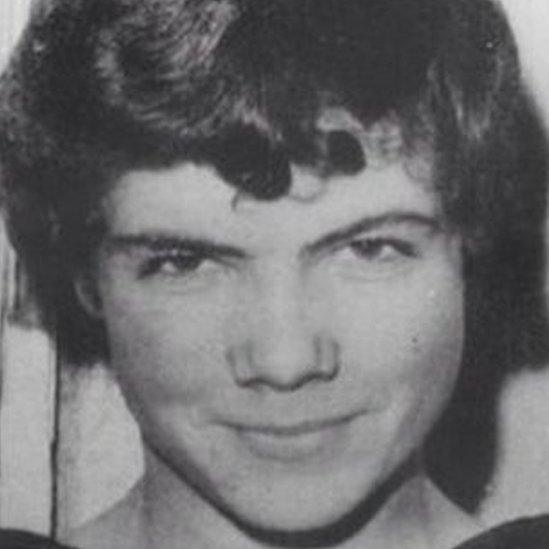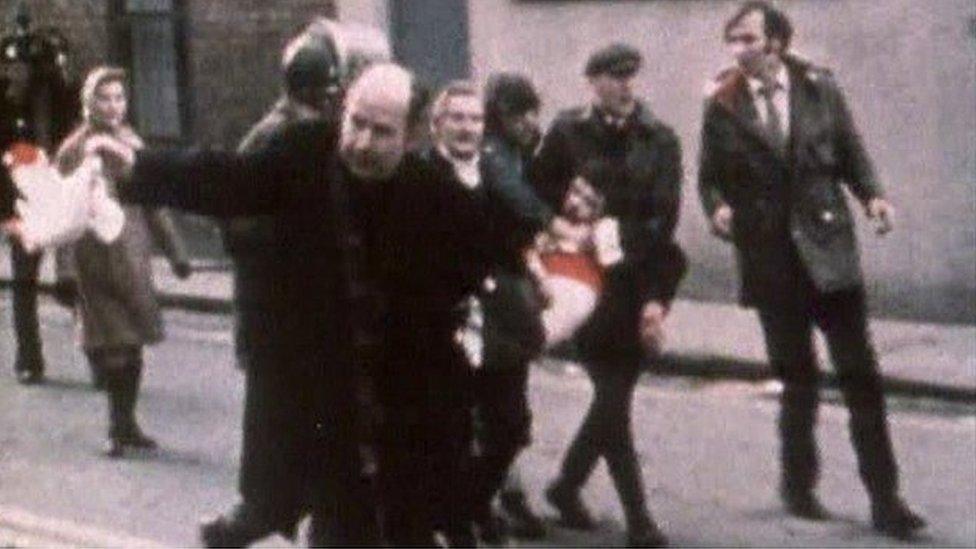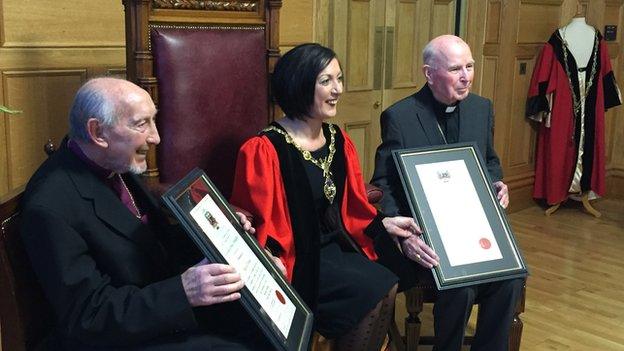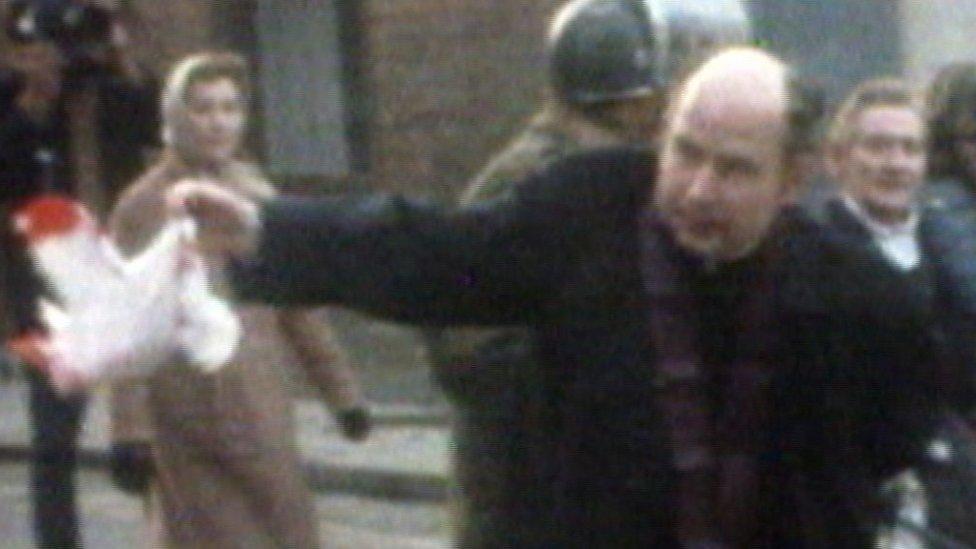Bishop Edward Daly: Photo journalist recalls 'unforgettable scene'
- Published
Dr Edward Daly: The priest made famous by his actions on Bloody Sunday
He was the man whose photograph of a priest waving a bloodied handkerchief became the iconic image of Bloody Sunday in Londonderry.
And photojournalist Fulvio Grimaldi remembers that day vividly.
He was speaking after the death of retired Catholic Bishop of Derry Edward Daly, the man at the centre of the picture.
On 30 January 1972, the then Fr Daly was pictured leading a group of people carrying the dying teenager Jack Duddy.
It became one of the enduring images of Northern Ireland's Troubles.
"I want to take this opportunity to appreciate his (Edward Daly's) courage, his bravery in doing his duty and beyond his duty," Mr Grimaldi told the BBC.
"I was very proud and happy to see that this picture then ended up as an iconic symbol of the suffering of the Derry people and of the Northern Irish people at large."
Thirteen civilians were shot dead by members of the British Parachute Regiment on what would become known as Bloody Sunday.
At the time, Fr Daly was a 39-year-old curate at St Eugene's Cathedral in the Bogside.

Thirteen people were killed on Bloody Sunday in January 1972
He attended the civil rights march in January 1972 in his capacity as parish priest, but instead became irrevocably linked to what was one of the darkest days of the Troubles.
Mr Grimaldi recalled seeing British soldiers shooting on people attending the march.
It was the first time he had ever seen someone shot.

Mr Grimaldi witnessed Jack Duddy being shot
"I had been to war situations before, but such a direct view of somebody being killed in cold blood while he was fleeing I had never had the experience before," the photographer told the BBC.
"I saw this little boy on the ground, I think, by that time lifeless, and Bishop Daly, Fr Daly in those days, approaching under a hail of bullets with enormous courage trying to help this boy."
"Then realising as they were kneeling around his body that there was nothing to be done anymore, that life had gone out of him.
"That's the moment Fr Daly gave him the last rites with the boy's head being held up by the first aid men."

Fr Edward Daly leads a group of people carrying the dying body of Jack Duddy on Bloody Sunday
Mr Grimaldi said he was "very close to the scene".
"I kept taking pictures because I thought that this was to be shown, this was to be provided as evidence to the world how such an enormous crime could be committed against defenceless people and with a priest kneeling down giving the last rites.
"As they were lifting the boy and trying to move away they still had to take cover, to bend down to avoid the bullets that kept being fired at them."
It was one of the most extraordinary things the photojournalist had ever seen.

Bishop Daly retired in 1994 after he suffered a stroke but he continued in the role of chaplain to Derry's Foyle Hospice until February
He just kept taking pictures of "this incredible, historical, unforgettable scene", he said, but did not expect it to receive world-wide attention.
"I just thought this needed to be shown to the world," added Mr Grimaldi.
"This was to become evidence for what was happening, what was the truth of the entire situation."
Clarification 9 April 2019: This article was amended to remove a reference to the death of John Johnston. This reflects the Bloody Sunday Inquiry's finding about Mr Johnston's death several months after he was wounded in Derry on 30 January 1972. The inquiry report states that his death was "not the result of any of the wounds he sustained on Bloody Sunday".
- Published8 August 2016

- Published8 August 2016

- Published24 March 2015

- Published8 August 2016

- Published8 August 2016
